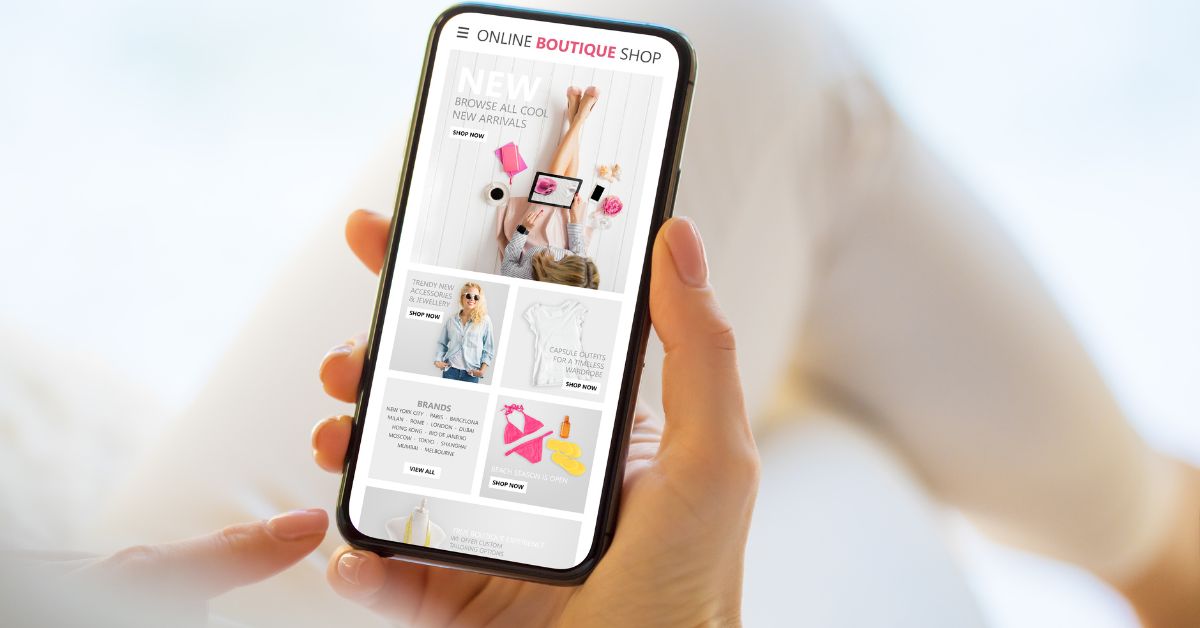A successful mobile phone marketing strategy is more critical than ever as consumers rely more and more on their smartphones for information, entertainment, and shopping.
Mobile phones are now more than just communication tools; they are the center of our digital existence in an age where the palm-sized wonders we carry in our pockets rule. Utilizing the marketing potential of mobile devices is not just a fad; it is a business necessity.
Recent statistics confirm this trend, with mobile devices accounting for massive online interactions. This paradigm shift calls for a thorough investigation of strategies that can both draw the attention of the mobile-savvy audience and translate that attention into actual leads and sales.
Businesses need a comprehensive playbook to successfully navigate the challenging world of mobile marketing, which includes everything from the nuances of responsive design to the complexity of SMS campaigns.
This article presents 11 slowly investigated and tested mobile phone marketing strategies that can help your mobile marketing efforts reach new heights to serve as your guide through this digital landscape.
These strategies delve into the heart of mobile consumer behavior, offering actionable insights and real-world examples to bolster your mobile marketing toolkit, whether you’re a startup looking for visibility or an established brand hoping to stay ahead.
Let’s start the journey through the worlds of responsive design, SMS marketing, mobile apps, and more to realize the full potential of mobile phones as marketing tools and communication tools.
The Power of Mobile Marketing
Mobile devices have become universal in the digital age, changing consumer behavior and making them business-friendly communication tools.
The numbers speak for themselves: mobile devices carried out a startling portion of online activities. It emphasizes the undeniable influence and shaping power of mobile marketing on consumer decisions.
Due to its close relationship with consumers, who frequently check their smartphones for multiple reasons, mobile phone marketing is dominant.
Businesses now have an unmatched opportunity to build direct, immediate communication channels with their target market. Additionally, the mobile platform enables location-based and personalized marketing strategies that can adapt content to specific contexts and user preferences.

Businesses that recognize the value of mobile phone marketing strategy can use data analytics to access a goldmine of consumer insights and gain a real-time understanding of their audience. It makes it possible to create content that appeals to mobile users and allows for targeted advertising.
Recognizing and utilizing the power of mobile marketing is crucial for remaining relevant, successfully engaging customers, and achieving business success in the dynamic digital landscape as we navigate an era dominated by portable wonders in our pockets.
Understanding Your Target Audience
Any successful marketing effort relies on a solid comprehension of your target audience. Businesses must use a nuanced strategy to define and engage their unique demographics in the digital age, where consumer preferences vary quickly.
Utilizing market research and data analytics becomes essential because they provide information about the preferences, actions, and target audience expectations.
The significance of this knowledge lies in its capacity to inform marketing strategies and the full range of business activities. Knowing your target market helps you design products and services that fulfill their needs and preferences.
A thorough understanding of your audience allows you to create content that effectively grabs and holds readers’ attention in a mobile marketing context, where attention spans are short.
Furthermore, selecting the best channels for engagement depends on audience insights. Aligning with your audience’s preferred platforms ensures that your marketing messages reach them where they are most receptive, whether through social media, mobile apps, or other digital channels.
Knowing your target market is more than just a first step; it’s a continuous process that enables businesses to innovate and adapt, creating a symbiotic relationship between the consumer and the brand in the ever-changing market.
Responsive Design and User Experience
Responsive design is the cornerstone of a seamless and satisfying user experience in mobile marketing. Due to the prevalence of smartphones and the wide range of screen sizes, it is essential that websites and content dynamically adapt.
Irrespective of whether a user accesses content on a desktop, tablet, or smartphone, a responsive design makes sure that their journey is consistent, engaging, and functional across devices.
A website with responsive design optimization prioritizes readability and fluid navigation over simply resizing elements. This adaptability directly translates to better user experience (UX) for retaining visitors and encouraging conversion.
A responsive design considers the speed of mobile interactions as users access information more frequently, lowering bounce rates and raising general satisfaction.
Search engines also favor responsive websites and give mobile-friendliness a high ranking. It highlights the mutually beneficial relationship between responsive design, user experience, and search engine optimization and how it affects a site’s visibility.
SMS Marketing
Short Message Service (SMS) marketing continues to be a steadfast strategy for direct and immediate communication with customers in the dynamic world of mobile marketing.
Due to the widespread use of mobile devices, SMS has an unmatched reach, making it an essential tool for companies looking to interact with their customers in real time.
The ease of accessibility and use of SMS marketing makes it effective. SMS messages boast a much higher open rate than other forms of communication because most people keep their mobile phones close at hand.
Additionally, the briefness of SMS calls for a succinct and compelling message, ensuring that businesses cut through the clutter and provide their audience with impactful content.

Strategic segmentation, personalized content, and a clear call to action are essential for successful SMS campaigns.
With businesses using the immediate nature of the medium for time-sensitive promotions, flash sales, and event reminders, timing is also critical in SMS marketing.
The seamless integration of SMS marketing with other digital strategies catalyzes increased consumer engagement and conversion.
SMS marketing stands out as a strong and dependable tool for businesses navigating the crowded digital landscape to foster direct connections, develop brand loyalty, and drive conversions in the palm of the consumer.
Mobile Apps for Business
Mobile apps have transformed from novelties to crucial resources for companies looking to establish a long-lasting presence in their customers’ palms in the age of digital dominance.
Mobile apps go beyond websites by providing a curated and personalized experience, turning them into efficient engagement tools, conversion, and brand loyalty.
The unmatched accessibility that mobile apps offer is one of their primary benefits for businesses.
Since users spend a significant portion of their digital time on smartphones, an app provides a consistent and convenient connection, fostering a seamless interaction between the brand and the customer.
Additionally, mobile apps allow companies to use features like push notifications, improving direct communication and informing customers about specials, updates, or tailored content. It can affect conversion rates and user engagement.
Through improved user experiences, mobile apps also promote brand loyalty. Businesses can create a distinctive and memorable interaction by customizing functionalities to the specific needs and preferences of the target audience, fostering a sense of exclusivity and value.

Using cutting-edge features such as augmented reality or machine learning strengthens mobile apps’ position as dynamic tools for businesses looking to stay ahead of the curve as technology advances.
Social Media Marketing for Mobile
Social media marketing emerges as a dynamic force in the mobile-first environment of the digital age, exerting unmatched influence over consumer behavior. Businesses must use social media marketing strategies to seamlessly integrate with the mobile user experience because social media interactions occur on mobile devices.
The strength of social media marketing for mobile lies in its capacity to produce intriguing, shareable content that connects with audiences browsing their feeds on smartphones and tablets.
In this setting, attention-grabbing elements like visual content, succinct messages, and interactive elements flourish while mobile browsing moves quickly.
Mobile-friendly platforms such as Instagram Stories, Snapchat, and TikTok best demonstrate the mutually beneficial relationship between social media and mobile.
These platforms put a premium on immersive, condensed-form content, giving companies uncommon opportunities to engage their audience creatively.
Additionally, social media platforms offer reliable mobile advertising options that let businesses precisely target particular demographics.
Mobile-centric social media strategies allow for seamless brand awareness, engagement, and conversion promotion, from sponsored posts to interactive ads.
Businesses that master social media marketing for mobile gain a competitive edge as social media continues to influence consumer trends.
Brands can succeed in the constantly changing environment of digital connectivity by creating visually appealing, shareable content for mobile.
Location-Based Marketing
Location-based marketing stands out as a strategic powerhouse in the age of hyper-connectivity, leveraging consumers’ geographic context to deliver personalized and targeted messages.
This innovative strategy takes advantage of the wide availability of GPS-equipped mobile devices to allow businesses to interact with customers based on their location in real time.
The fundamental idea behind location-based marketing is to send users pertinent content when they are close to a particular physical location.
Businesses can customize their messaging to the audience’s needs and interests using push notifications, geotargeted ads, or location-specific promotions.

Enhancing the customer experience is a primary benefit. Retailers can, for instance, send special offers to customers close to a store, bridging the gap between the offline and online shopping experiences.
The same goes for restaurants, which can use location-based marketing to entice customers with special offers.
Additionally, location-based marketing offers insightful data. Businesses can improve their strategies, optimize storefront layouts, and make data-driven decisions that enhance performance by analyzing customer movement patterns and preferences.
Businesses must balance user consent and personalized marketing as privacy concerns change. Businesses can effectively use location-based marketing to increase foot traffic, and sales, and build stronger relationships with local customers.
Mobile SEO Strategies
Mobile SEO (Search Engine Optimization) strategies are essential for businesses seeking online visibility and success in the mobile-dominated digital era.
Effective Mobile SEO is crucial in determining an online presence because online searches now come from mobile devices, and search engines prioritize mobile-friendly websites in their rankings.
Responsive design is a component of mobile SEO strategies, ensuring that websites adapt fluidly to different screen sizes. This aligns with search engine algorithms to favor mobile-friendly content and improve user experience.
Another essential factor is page speed, which mobile users require for the best browsing experience.
Additionally, companies need to prepare their content for mobile search intent. It is possible to create pertinent, condensed, and easily understandable content that aligns with mobile search behaviors by understanding the subtleties of how users express queries on mobile devices.
Local SEO is crucial, especially in relevance to “near me” searches. Enhancing visibility in local search results requires ensuring that business details are consistent and accurate across online platforms.
Must Read: Avoid Common SEO Mistakes with these Top 10 Easy Tips
Mobile Advertising Tactics
Mobile advertising strategies have established themselves as cornerstones of the digital marketing playbook, carefully crafted to pique the interest of the constantly scrolling mobile audience.
Because users spend maximum time on smartphones and tablets, effective mobile advertising is essential for attracting and retaining the target market.
Utilizing mobile-optimized ads is one essential strategy. Ad creatives, whether interactive videos or display banners, must be optimized for mobile devices’ smaller screens and various formats.
The visual appeal increases user engagement when combined with a compelling and clear message.
In-app advertising is another effective strategy that takes advantage of users’ time spent using mobile apps.
Strategic placements within well-known apps align the advertising message with the user’s interests, ensuring relevance and conversion probability.

Social media platforms provide numerous opportunities for mobile advertising, enabling companies to precisely target audiences based on interests, demographics, and behaviors.
In the mobile feeds, sponsored posts, carousel ads, and interactive stories increase visibility and engagement.
Implementing mobile-friendly formats for content, such as AMP (Accelerated Mobile Pages) and Google’s Mobile-First Indexing for SEO, ensures that all aspects of the online world work together to support mobile advertising initiatives.
Successful businesses use a multifaceted strategy to navigate the crowded mobile landscape. They combine creativity, precise targeting, and mobile-friendly formats to deliver efficient mobile advertising campaigns that cut through the digital noise and resonate with consumers.
Influencer Marketing in the Mobile Space
Influencer marketing has seamlessly adapted to the mobile environment in the dynamic world of digital marketing, emerging as a powerful tactic for companies looking to establish an authentic connection with their audience.
On platforms where mobile devices are the primary access method, influencers—often people with sizable and active social media followings—have a significant impact.
The close bond between influencers and followers is a primary benefit of influencer marketing in the mobile space.
Influencers can seamlessly incorporate products or services into their mobile-centric narratives by creating authentic content, which gives them a native and reliable promotion that connects with their audience.
Various formats for influencer collaboration are available in the mobile space, from captivating Instagram Stories to live video sessions on websites like TikTok or YouTube.
These formats allow influencers to produce dynamic, real-time content that captures and maintains audience attention, aligning with mobile user behaviors.
Mobile influencers frequently set trends by introducing new apps, goods, or services to their followers. Therefore, businesses looking to get a pulse on current trends and customer preferences should strategically use influencer partnerships in the mobile space.
Influencer marketing is a growing industry, and as mobile usage increases, businesses have a unique opportunity to tap into people’s influence in a way that resonates with customers and feels natural and authentic in their hands.
Analytics and Measurement
Analytics and measurement are becoming essential tools in the dynamic world of mobile marketing, giving companies the ability to assess the success of their plans, hone their promotions, and make wise decisions.
Analytics help businesses understand consumer behaviors, preferences, and engagement patterns to reveal the impact of mobile marketing initiatives.
User interactions, click-through rates, app downloads, and conversion rates are just a few of the metrics that mobile analytics explore.
These data provide a thorough picture of how users engage with mobile content, allowing businesses to tailor their campaigns for the best possible impact.
Additionally, using analytics tools makes it easier to measure Key Performance Indicators (KPIs), which give quantifiable information on the success of mobile marketing initiatives.
Businesses can monitor the financial impact of their mobile strategies, from customer acquisition costs to return on investment.
Real-time analytics are becoming significant as the mobile environment changes. Businesses can quickly adapt, take advantage of new trends, and take care of problems when they monitor and react to user behaviors in real time.
Future Trends in Mobile Marketing
Knowing what the mobile marketing landscape will look like in the future reveals how consumer behavior and technological developments have shaped it.
AR and VR are on the verge of redefining engagement by providing an immersive experience beyond conventional advertising.
Brands that use augmented reality (AR) for interactive product trials or virtual reality (VR) for simulations may build stronger relationships with tech-savvy audiences.
Mobile marketing will undergo a revolution with the rise of 5G technology. 5G enables seamless video streaming, improves app performance, and creates opportunities for cutting-edge content delivery thanks to its faster speeds and lower latency.
By utilizing these capabilities, marketers can provide users with dynamic experiences, creating a new benchmark for mobile engagement.
Voice search and smart speakers are becoming more popular, changing mobile SEO tactics. Must optimize content for voice searches as the number of users employing voice commands increases.
Natural Language Processing (NLP)-based, personalized AI-driven chatbots are also anticipated to provide real-time customer support and customized user experiences.
To sum up, success in the constantly changing world of mobile marketing requires a strategic embrace of new trends and an unwavering dedication to user-centricity.
Future business opportunities are unmatched, from the immersive potential of AR and VR to the transformative strength of 5G technology. It will be crucial to incorporate voice search and AI-driven chatbots and keep ethical data practices.
The development of mobile marketing is not solely technological; it is also a successful synthesis of creativity, adaptability, and moral considerations.
Businesses that follow these trends will grab consumers’ attention in the palm of their hands and create enduring connections that go beyond the boundaries of the digital world as we look to the future.






